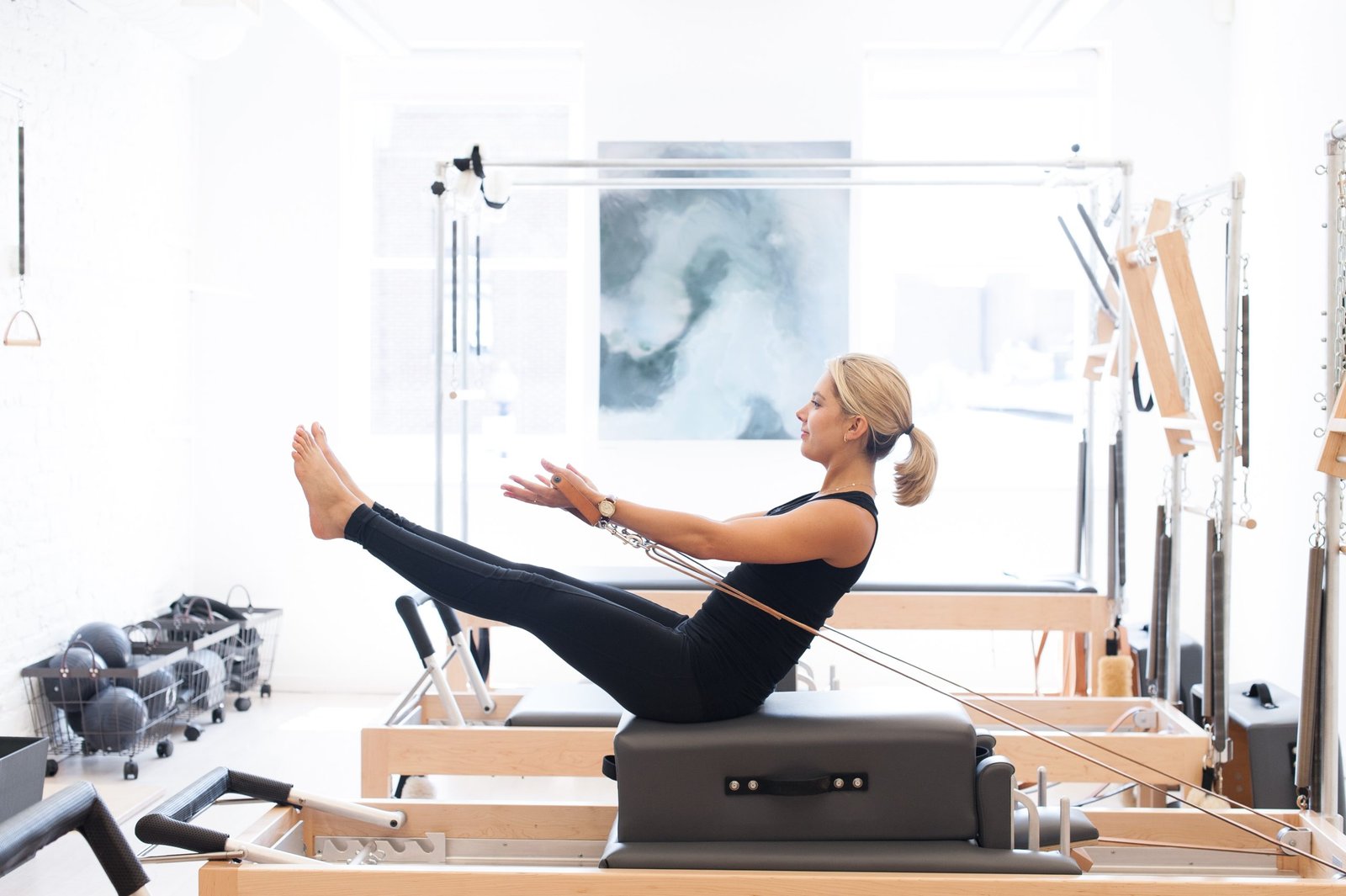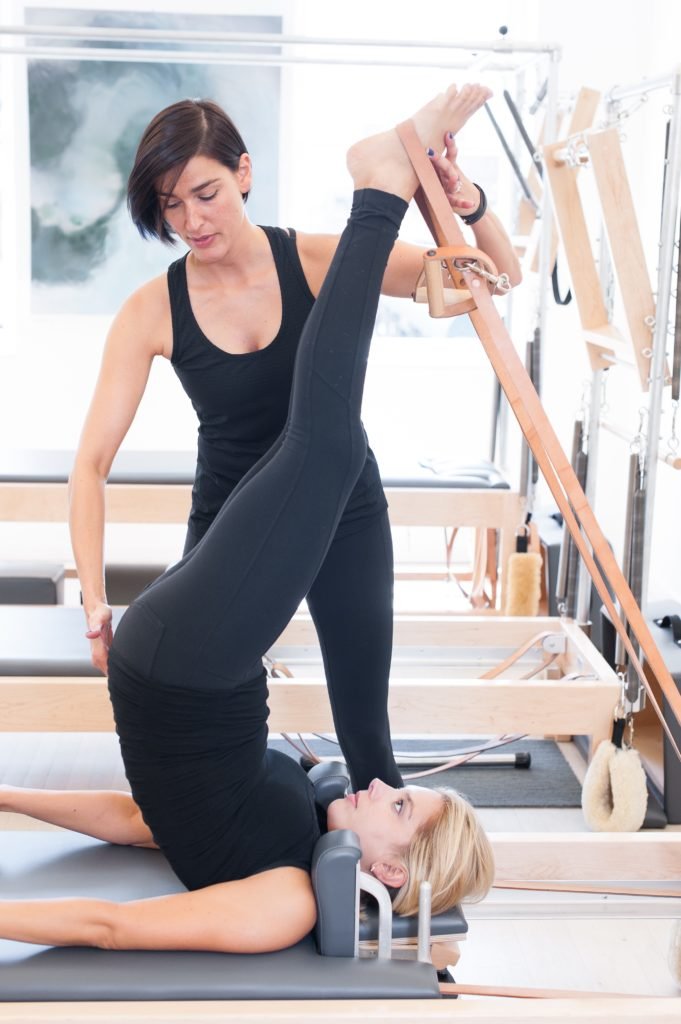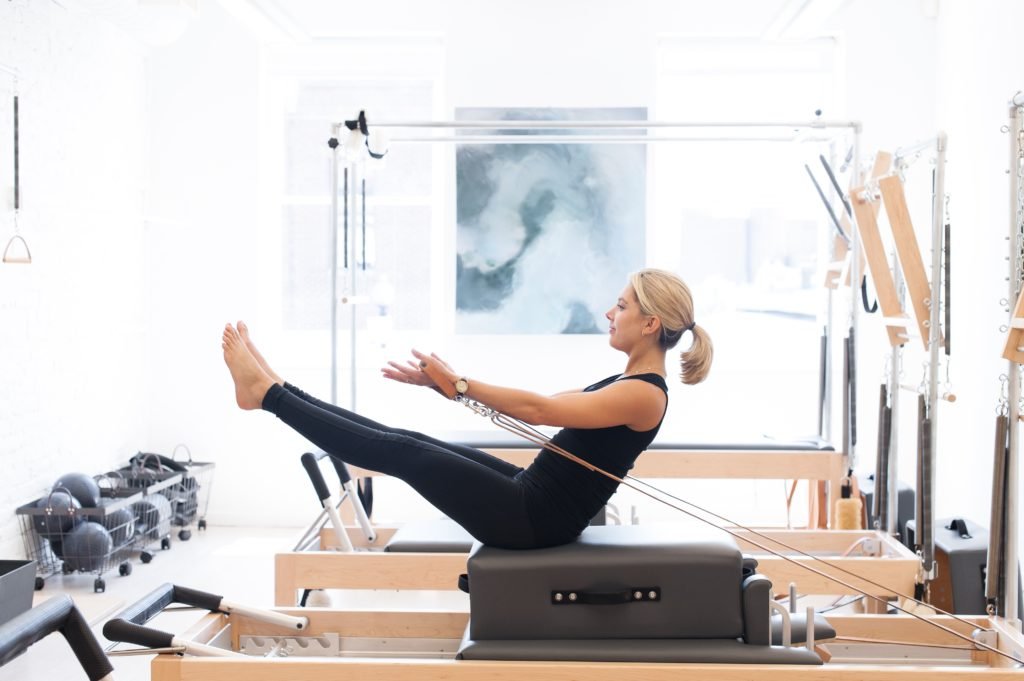Pilates: The Secret to Staying Young

Pilates has been around long enough to have become a household name. While many tout its benefits, others are just realizing how powerful it is in maintaining a healthy and active life as we age. Its creator, Joseph H. Pilates stated it best when he said, “You are only as young as your spine is flexible.”
Growing older is an inevitability. But, keeping our bodies at their peak performance is the best way to remain active and enjoy a more fulfilling life.
Pilates helps to achieve that by focusing on proper alignment and precision movement. It also concentrates on maintaining range of motion and stability. The result is a taller, stronger, and more capable body.
This becomes clear while doing your daily activities such as loading groceries into your car, picking up your grandkids, or training for your next 5k.

Have you considered trying this workout program? If so, the following information will help to guide you.
The Best Health Program for Older Bodies
While this exercise program is truly for everybody, it’s especially important as our bodies age.
As we grow older, our bodies begin to bend forward, gain a slump in the shoulders, and we begin to shuffle as we walk. These natural inclinations can be slowed and, often, reversed. With exercises that focus on form, posture, and range of motions at all joints, Pilates proves to be beneficial.
This exercise method focuses first on core strength. Strengthening of the deep musculature of the abdominals and hips is imperative to healthy movement.
While Pilates is core-centric, it’s also a total body workout. Under the watchful eye of a certified instructor, a student moves through a series of exercises in a studio that engages the whole body. These exercises address the four S’s: Strength, Stamina, Stretch, and Stability.
Using spring resistance and/or your own body weight, you increase your stamina by moving seamlessly from one exercise to the next without rest. Stretching is achieved by using self-imposed oppositional forces with the help of apparatus.
And stability is created by moving in ranges of motion that your body allows, while safely challenging those end ranges.
Together, this creates a strong, lengthened body that stands tall and moves with ease. As an extra benefit, back pain tends to disappear as core strength is restored.
What is Pilates
“I must be right. Never an aspirin. Never injured a day in my life. The whole country, the whole world, should be doing my exercises. They’d be happier. “
— Joseph H. Pilates
Pilates, originally named Contrology, was developed in the early 20th century by Joseph H. Pilates. The son of a prize-winning gymnast father and naturopath mother, he was focused on health and fitness early in his life, despite his sickly constitution.
After studying many western and eastern fitness programs, including yoga, he developed his unique program of controlled and mindful movement for health.
Using his body as a test subject, he healed himself and found success as a boxer and gymnast. During WWI, Pilates was detained in an internment camp for three years and used that time to hone Contrology.
He rigged mattress springs onto hospital beds to rehabilitate injured soldiers and amputees. These rigged beds became the first of many apparatus that he would later develop to help people gain health and wellness through movement.
Pilates Apparatus

Joseph Pilates accompanied his method with a variety of equipment, which he called ‘apparatus’. The best-known and most popular apparatus is the Reformer, named because it ‘universally reformed the body’.
Other apparatus developed by Pilates includes the Cadillac, Wunda Chair, High Chair, Spine Corrector, Ladder Barrel, and Ped-O-Pull, just to name a few. (A comprehensive studio will have each of these items listed, as well as more.)
The Mat is not traditionally thought of as an apparatus, but it is, and it is the most challenging of them all. Without the spring resistance to offload your body’s weight, aid in movement, and open up ranges of motion that your body can’t perform on its own, an injury is more likely to occur.
Mat classes began when some Pilates studio clients wanted to have a more cost-effective access to the many benefits of Pilates. While good mat classes, with small class sizes and experienced teachers, can be a wonderful supplement to an already active lifestyle, training one-on-one with an instructor, even if only at the start of your Pilates practice, will pay off in dividends.
While working with your instructor, you will learn your modifications to the exercises delivered in a more general class so that you can reduce the likelihood of injury. Plus, the ‘take-aways’ you learn in a private setting can be brought to your group mat class, so you get the most out of it.
Finding the right studio and instructor
There are many ‘certifying’ entities, some that give instructors their credentials after only a few hours or a single weekend of instruction. Others have more rigorous ‘certification’ processes.
For example, Power Pilates, the institution that I am ‘certified’ through, requires 600 hours of study over a minimum of 9 months of time.
Because there are no governing bodies truly certifying who is up to snuff, it’s quite easy to end up with an instructor that may not have the knowledge and teaching experience necessary to keep clients safe. That being said, answers to a couple of questions can give you a lot of information about the instructor and their abilities.
Ask a key question of a prospective Pilates instructor –
“Through what institution are you certified and/or were you classically trained?”
There are corporate institutions training instructors around the globe: Power Pilates, Balanced Body, Peak, Stott, and BASI are the largest. Some smaller, privately owned teacher training institutions are also widely recognized, like JL Body Conditioning, Romana’s Pilates, and the Pilates Center in Boulder.

While each of these has their own ‘style’, the main difference between each institution is whether they train their instructors in the classical style or not. ‘Classical’ refers to exercises performed the way that Joseph Pilates intended.
To be purely classical, an instructor would only teach exercises in which there is photographical or videographical evidence that Joseph Pilates taught or performed, using apparatus that most closely resembles the equipment Joseph Pilates created.
Think of classically trained instructors in the same way that many dance enthusiasts view contemporary dance – the best contemporary dancers are often the ones trained in classical ballet.
While they may no longer dance ‘en pointe’, the foundation they developed while training made them great. To find out where an instructor trained, do an online search of them and their Pilates studio, or give them a call.
In our Washington, DC Pilates studio, Kinesis, all of our instructors are Power Pilates trained. When working with clients, our basis of thought is classical, but we take a more contemporary approach when it makes sense.
We believe a lot has changed in the last 60+ years – there have been kinesiological discoveries educating us about how our bodies move, technological advances that have created structural changes in people’s bodies (knee replacements to name one), and a more sedentary lifestyle has replaced the Joseph Pilates-days when people stood and walked a lot more.
All of these changes call for thoughtful exercise selections, during each and every workout.
Pilates is an effective way to reduce the effect that aging has on our bodies and to reduce the limitations an aging body brings to our lives. Feel liberated with a body that does more of what you ask of it, for a longer portion of your life.
Lissette Valdes, Certified Pilates Instructor & Co-Owner Kinesis, Washington, DC lissette@kinesisdc.com


One Comment